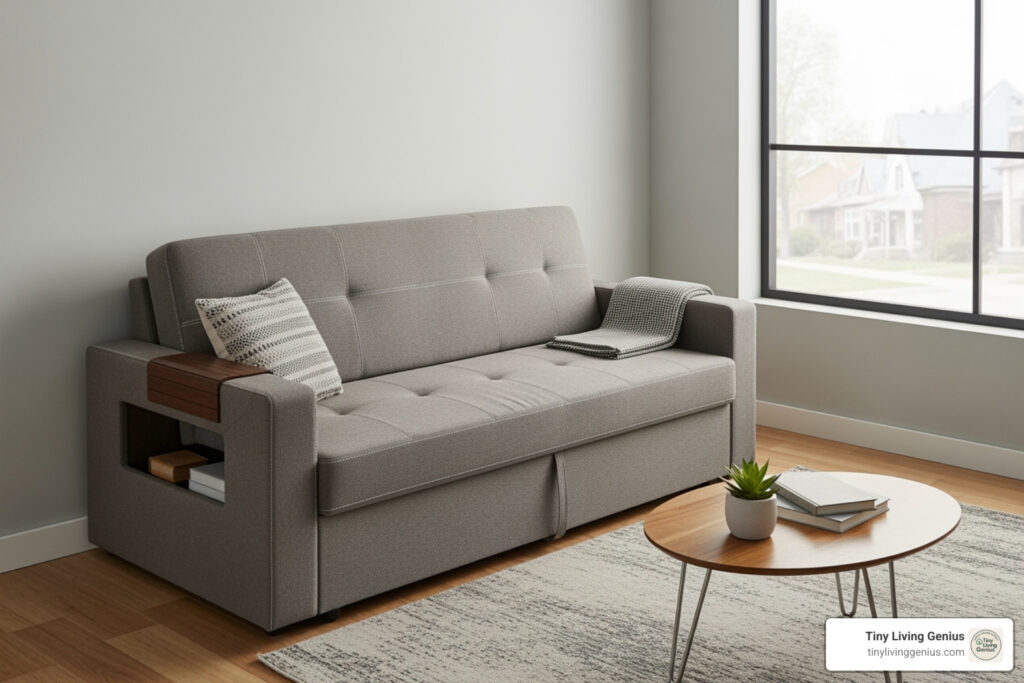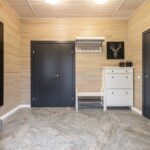Small Sofa Sleeper Bed: Smart Guide 2025
Introduction: The Smart Solution for Compact Living
A small sofa sleeper bed is a dual-purpose piece of furniture that functions as a comfortable sofa by day and converts into a bed at night. Here’s a quick overview:
Quick Overview:
- Size Range: Twin (39″ wide) to Full (47.2″ wide) – seats 2-3 people, sleeps 1-2
- Main Types: Pull-out (hidden mattress), Click-clack (fold-down), Convertible chairs
- Best For: Studio apartments, guest rooms, small living spaces
- Price Range: Varies by brand, material, and mattress quality
- Key Features: Space-saving design, built-in storage options, variety of styles
In a small apartment or studio, every piece of furniture must justify its footprint. When you can’t dedicate separate areas for sitting and sleeping, small sofa sleeper beds are the perfect solution.
These compact powerhouses serve as regular sofas for daily use and transform into beds with real mattresses for guests or nighttime use, eliminating the need for air mattresses and ensuring comfort isn’t sacrificed for function.
The benefit of a small size is getting the versatility of a sleeper sofa without overwhelming your space. A twin-size sleeper (around 39 inches wide) seats two, while a full-size option (around 47.2 inches) won’t dominate a room like a queen-sized sleeper would.
Many models now include built-in storage for bedding or feature modern designs that blend seamlessly into your decor.
I’m Ramy Saber, a Civil Engineer and founder of Tiny Living Genius. My background in facility operations taught me that efficient design isn’t about compromise—it’s about finding solutions that work twice as hard, like the small sofa sleeper bed.
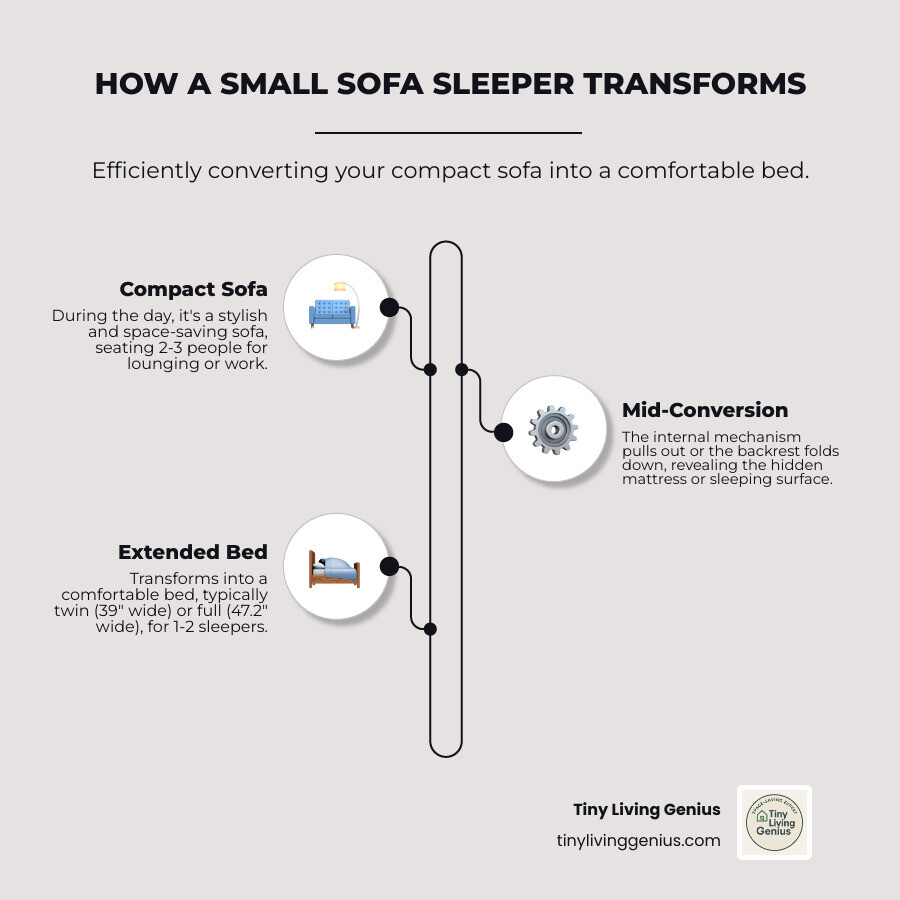
Quick look at small sofa sleeper bed:
Why a Small Sofa Sleeper is the Ultimate Space-Saver
When living in a compact space, every piece of furniture needs to work overtime. A small sofa sleeper bed does just that, changing a cozy living room into a comfortable guest bedroom in minutes. No dragging a mattress from storage or dealing with inflatable beds—just pull, unfold, and you’re guest-ready.

The primary benefit is maximizing square footage. A regular sofa provides only seating, but a sleeper sofa occupies the same footprint while delivering double the function. It’s a cost-effective solution, as one purchase replaces two separate furniture pieces—a couch and a bed. This versatility for any room means the furniture adapts to your life. A home office can double as a guest room, or a studio can feel spacious by day and accommodate visitors by night.
Compared to regular sofas, sleepers add usefulness without bulk. And unlike larger queen-sized sleepers that can overwhelm a small apartment, a twin or full-size sleeper provides the same function while keeping your room feeling open.
For more ways to make your compact space work harder, check out our creative furniture solutions for small spaces and the ultimate guide to small apartment furniture: smart solutions for tiny living.
The Benefits of Going Small
Why choose a small sleeper? Because fit is everything.
Accommodating guests becomes effortless. A twin-size sleeper (39 inches wide) seats two and sleeps one, perfect for a single visitor. A full-size sleeper (47.2 inches) can host two overnight guests without turning your living room into a furniture showroom.
The real magic is in creating a multi-use room. Your living room, home office, or playroom can transform into sleeping quarters, offering flexibility that is invaluable in modern small-space living.
Finally, enhancing small-scale design is about proportion. An appropriately sized small sleeper maintains visual balance, making a room feel open and inviting, not cramped and cluttered. For more right-sized seating ideas, see our guide on small couches.
Sleeper Sofa vs. Fold-Down Sofa: What’s the Difference?
These terms are often used interchangeably, but the distinction affects comfort and space.
A traditional sleeper sofa (pull-out) hides a complete bed frame and mattress under the seat cushions. You remove the cushions and unfold the frame to reveal a real mattress—innerspring, memory foam, or hybrid. This pull-out mattress mechanism provides dedicated support, making it more comfortable for longer stays.
A fold-down sofa (futon or sofa bed) is simpler. The sofa’s existing cushions fold flat to create the sleeping surface. The fold-down design is lighter, more compact, and easier to convert—ideal for a quick nap or a friend crashing for one night.
Comfort levels differ significantly. Sleeper sofas with their separate mattresses feel more like a traditional bed. Fold-down sofas, where you sleep on the cushions, are better for short-term use. In terms of structural differences, pull-out mechanisms are sturdier but heavier, while fold-down designs are simpler and more portable.
If comfort is your priority, choose a pull-out sleeper. For simplicity and occasional use, a fold-down is a great match. Explore compact options in our article on futon sofa bed small.
Decoding the Styles: Types of Small Sofa Sleepers
Not all small sofa sleeper beds are the same. The conversion mechanism impacts comfort, use, and space. Let’s break down the main types so you can find your perfect match.

Each style has its own strengths. Pull-outs offer a traditional bed experience, click-clacks convert in seconds, and convertible chairs are the ultimate space-savers for tight spots. The table below offers a quick comparison.
| Type of Sleeper | Ease of Use | Mattress Comfort (when open) | Footprint (when open) | Ideal Use Case |
|---|---|---|---|---|
| Traditional Pull-Out | Moderate (pull & unfold) | High (dedicated mattress) | Largest | Regular guest use, primary bed for short periods |
| Click-Clack / Fold-Down | High (simple click/push) | Moderate (sofa cushions) | Medium | Occasional guest use, quick naps |
| Convertible Chair/Ottoman | High (unfold/slide) | Moderate (compact mattress) | Smallest | Single guest, ultra-small spaces, kids’ rooms |
Traditional Pull-Out Couches
This classic design hides a bed frame and mattress beneath the seat cushions. You remove the cushions and pull the frame forward to unfold a complete mattress. Modern pull-outs have overcome their uncomfortable reputation, now offering quality supportive innerspring mattresses or body-contouring memory foam mattresses. The frame construction is equally important. Look for kiln-dried hardwood frames or metal construction for durability and smooth operation. While pull-outs require more effort and space to open, they offer the best comfort for guests staying more than a night or two. For a compact option that sleeps two, consider a small double sofa bed.
Click-Clack & Fold-Down Models
For speed and simplicity, click-clack and fold-down sofas are ideal. Instead of a hidden mechanism, the backrest of the sofa adjusts to create a flat sleeping surface. With a click-clack mechanism, the back clicks through several positions, from upright to flat. The conversion takes seconds with no cushions to remove. The sleeping surface is typically firmer since you lie on the sofa’s cushions. High-density foam can improve comfort significantly. Many of these models feature armless designs, which look sleek, save space, and fit through narrow doorways, making them perfect for modern, minimalist apartments. Explore more options in our top 7 foldable sofas for small living rooms.
Convertible Chairs and Ottomans
For the tightest spaces, convertible chairs and ottomans are the ultra-compact heroes of tiny living. These pieces transform from unassuming seats into single-sleeper beds. A convertible chair unfolds into a twin-size sleeping surface, taking up no more space than a standard armchair. Convertible ottomans are even more discreet, serving as footrests or extra seats before unfolding to reveal a hidden bed. With a minimal footprint (often just 30-35 inches wide), they are perfect for studios, dorms, or home offices. They prove that small furniture doesn’t mean sacrificing functionality, a key theme in our tiny home furniture guides.
Your Buying Guide for the Perfect Small Sofa Sleeper Bed
Choosing the right small sofa sleeper bed is a significant decision for your home. This dual-duty furniture needs to serve as both an everyday sofa and a guest bed, so it’s important to get it right. Knowing what to look for makes the process much easier.
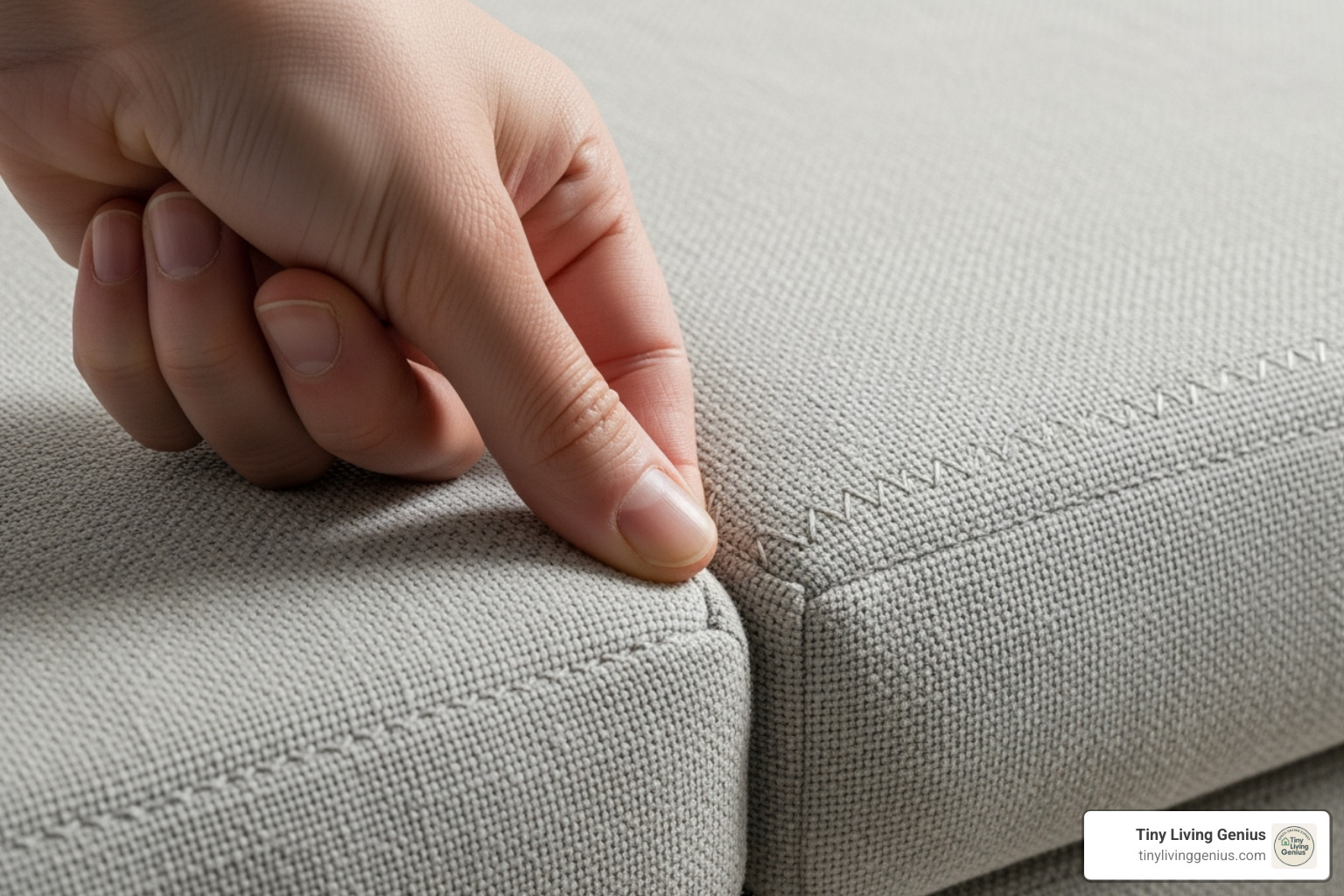
For broader design inspiration, a sofa style guide can help you match aesthetics to your space.
Key Factors for Your Small Sofa Sleeper Bed
These are the non-negotiables that determine whether you’ll love your new furniture.
- Size and Scale: Start by measuring your space. A twin-size sleeper is about 39 inches wide (sleeps one), while a full-size is around 47.2 inches (sleeps two). Crucially, measure the space needed when the bed is fully extended to ensure it doesn’t block doorways or walkways.
- Mattress Type: This is key for comfort. Modern innerspring mattresses offer good support, while memory foam mattresses contour to the body and reduce pressure points. Hybrids combine both. For frequent use, invest in memory foam or a hybrid.
- Frame Durability: A sturdy skeleton is essential. Look for frames made from kiln-dried hardwood or metal, ideally with corner-blocked joints for reinforcement. A quality frame ensures the mechanism operates smoothly for years.
- Upholstery Materials: This affects both look and maintenance. Performance fabrics resist stains and wear. Leather and faux leather are sleek and easy to clean. Natural fabrics like cotton are breathable but may wrinkle. Choose based on your lifestyle—pets and kids often call for performance fabrics or leather.
- Style: As a focal point, your sleeper should complement your decor. Whether you prefer modern, traditional, or mid-century modern, you can find a design that fits your taste, often so well-designed that guests won’t guess there’s a bed inside. For more tips, see our guide on choosing furniture for small spaces effectively.
Finding Quality and Value in a Small Sofa Sleeper Bed
Let’s find a small sofa sleeper bed that delivers quality without breaking the bank. Price ranges vary based on brand, materials, and mattress quality. To ensure you’re paying for quality, not just marketing, use customer reviews as your guide. Dig into comments about mattress comfort, mechanism smoothness, and long-term durability. Products marked as an “Overall Pick” are often a safe bet, having been highly rated and infrequently returned by real customers.
Before buying, check the warranty and return policies. A solid warranty on the frame and mechanism shows manufacturer confidence. Understand the return policy, as mattresses often have special conditions and may not be returnable if opened.
Shop at reputable retailers and look for certifications like CertiPUR-US for foam, which guarantees it meets strict standards. For inspiration on different design options, browse our collection of space-saving furniture.
Measure Twice, Buy Once: Ensuring the Perfect Fit
Buying a small sofa sleeper bed without proper measurements can lead to disaster. A sleeper sofa requires planning for two configurations: a sofa and a bed. Here’s how to ensure a perfect fit.
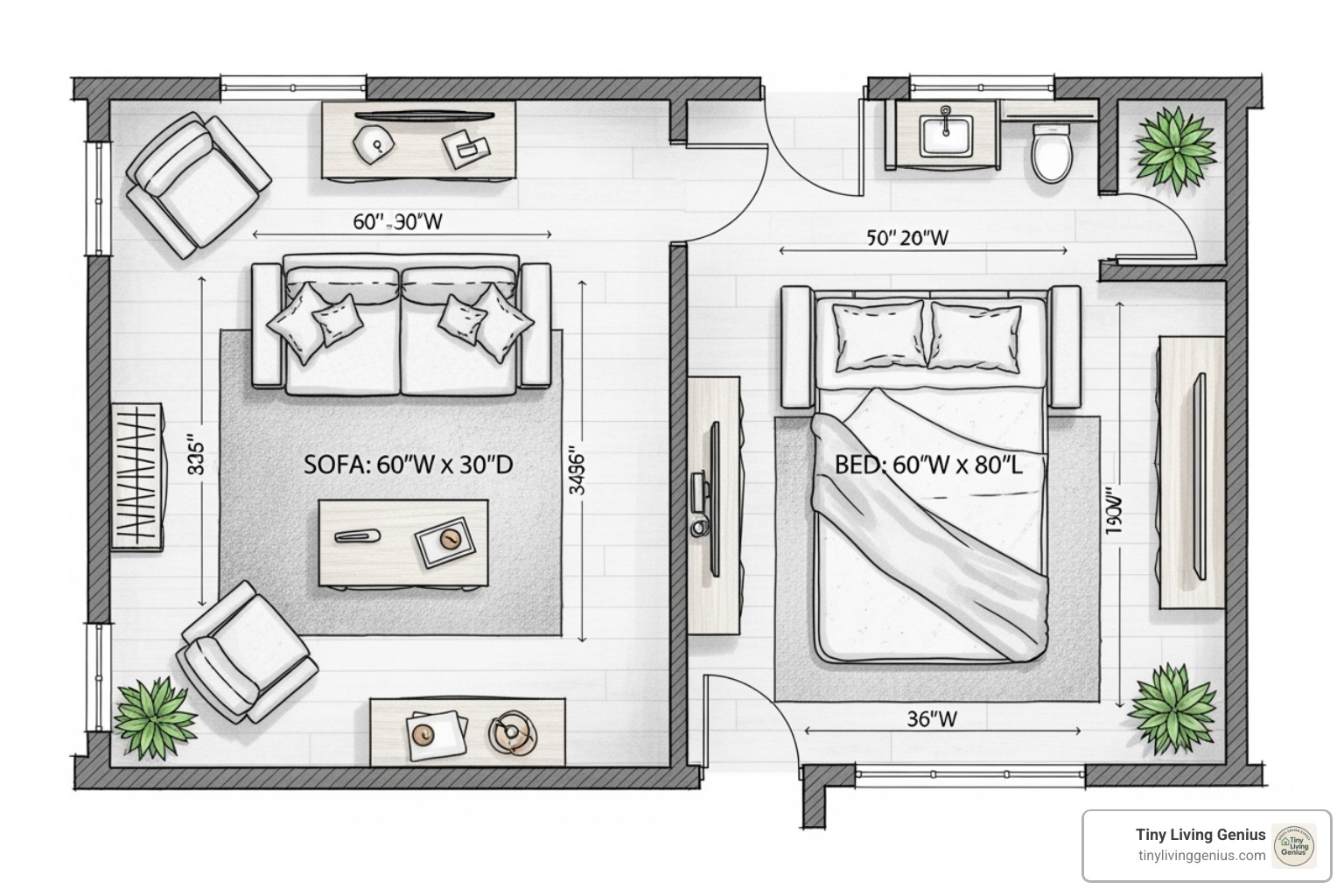
First, measure your space. Record the length, width, and height of the area where the sofa will live, noting any windows or radiators.
Next, account for clearance. This is critical. Measure from the wall to where the front edge of the mattress will be when fully extended. Add at least two to three feet of walkway space in front so the bed is accessible. The sofa’s width usually remains the same, but check the product specs to be sure.
Don’t forget about getting it through the door. Measure every doorway, hallway, and stairwell on the delivery path. A pro tip is to measure the diagonal dimension of doorways, as a sofa can sometimes be angled through.
For a foolproof final check, use painter’s tape to map the footprint on your floor. Outline the sofa’s dimensions, then extend the tape to show the bed’s full size. Walk around the outline. Does it feel cramped? Does it block anything? This simple visual test can save you from a costly mistake.
For more layout insights, check out our guide on studio apartment layout. And if you’re redesigning your entire space, our article on efficient design for small spaces: stylish living solutions small spaces offers comprehensive strategies for creating a home that’s both beautiful and brilliantly functional.
Frequently Asked Questions about Small Sofa Sleepers
We know you have questions, and we’re here to answer them! A small sofa sleeper bed is a significant investment for a compact home, so let’s clear up some common curiosities.
Can a sleeper sofa be comfortable enough for regular use?
Yes, a modern sleeper sofa can be very comfortable, even for regular use. The uncomfortable, lumpy sleepers of the past have been replaced by models with high-quality mattresses. You can now find small sofa sleeper beds with supportive memory foam, sturdy innerspring, or even hybrid mattresses that genuinely rival traditional beds.
If you’re planning to use your sleeper as your primary bed, prioritize mattress quality. Look for high-density foam or gel memory foam for the support needed for nightly restful sleep.
For an extra boost of comfort, consider adding a quality mattress topper. A well-constructed frame is also crucial, as it prevents sagging and provides a stable base for the mattress. While it may feel slightly different from a standalone bed, the convenience often outweighs any minor differences.
Do small sleeper sofas come with built-in storage?
Yes, many do! This is a fantastic feature for tiny living, turning a two-in-one solution into a three-in-one. Many models include built-in storage for bed linens, pillows, and blankets.
Storage chaises are a common option on small sectionals, with a lift-up top revealing a generous compartment. Some sleepers come with a matching storage ottoman, and certain fold-down models feature discreet under-seat compartments.
This clever storage helps keep your living area tidy without needing extra furniture. It’s exactly the kind of smart, multi-functional design we champion at Tiny Living Genius.
How do I care for my sleeper sofa’s mechanism?
A little regular care will keep your small sofa sleeper bed’s conversion mechanism running smoothly for years.
- Inspect Regularly: Every few months, check the hinges, springs, and levers for any signs of wear or loose connections.
- Lubricate When Needed: If the mechanism becomes stiff or squeaky, apply a silicone-based spray lubricant to the pivot points. Check your owner’s manual for specific recommendations.
- Open and Close Safely: Always follow the manufacturer’s instructions. Never force a stuck mechanism; check for obstructions first. Remove all cushions before opening a traditional pull-out to prevent damage.
- Keep it Clean: Vacuum under and around the mechanism periodically to remove dust and debris that can interfere with its operation.
Following these steps will ensure your sleeper converts effortlessly for years to come.
Conclusion: Accept Functionality and Style
Living in a compact space doesn’t mean compromising on comfort or style—it means getting creative with solutions that work harder for you. The small sofa sleeper bed is one of those rare pieces of furniture that truly earns its place in your home, offering both everyday comfort and guest-ready functionality without demanding precious square footage.
Throughout this guide, we’ve explored how these versatile pieces transform small-space living. From maximizing your limited square footage to providing a comfortable spot for overnight guests, a small sofa sleeper bed solves multiple challenges with one smart purchase. Whether you’ve fallen for a traditional pull-out with its real mattress comfort, a quick-converting click-clack for spontaneous use, or an ultra-compact convertible chair for the tightest spaces, you now have the knowledge to choose confidently.
We’ve walked through the key considerations together—from measuring your space to evaluating mattress quality, frame durability, and upholstery options. You know how to read reviews, understand warranties, and spot the features that matter most for your lifestyle. These aren’t just shopping tips; they’re tools to help you create a home that adapts to your needs.
At Tiny Living Genius, we believe small spaces deserve big ideas. A small sofa sleeper bed represents exactly that philosophy—it’s proof that thoughtful design can deliver both beauty and practicality. Your compact home doesn’t have to feel limited when every piece of furniture pulls double duty and looks good doing it.
Ready to find more space-saving solutions? Explore our complete guide to space-saving furniture and open up even more genius ideas for making your small space work brilliantly for you. Because when it comes to tiny living, smart choices make all the difference.

